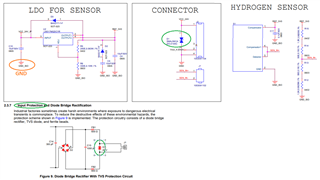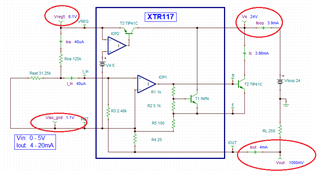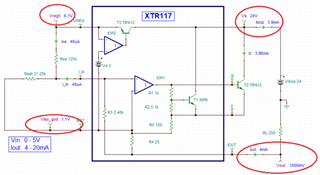Other Parts Discussed in Thread: INA321, LM317, INA823, XTR115, XTR116, XTR111
Dear Team
I have designed the 4-20mA transmitter using XTR117(transmitter) and INA321(amplifier)
I am facing issues in this particular design, attached the design file.
1) I am not getting the Output current as expected the maximum current i am getting is 0.300mA at Vout which we measured using the 4-20mA calibrator, transmitter is not even crossing 1mA current.
2) The XTR117 is getting over heated with the transistor attached.
3)XTR117 is consuming lot 50mA @ 12V and 24V.
4) At R8 and C6 the Output voltage is not crossing 600mV, in-between the R7 and R8 the voltage is getting varied in respect to the input.












